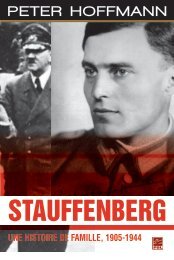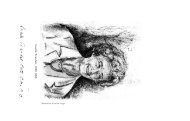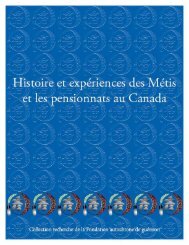Hockey's Most Unusual Records
Hockey's Most Unusual Records
Hockey's Most Unusual Records
You also want an ePaper? Increase the reach of your titles
YUMPU automatically turns print PDFs into web optimized ePapers that Google loves.
the unofficial guide to<br />
Hockey’s <strong>Most</strong> <strong>Unusual</strong> <strong>Records</strong>
For everyone who wants more out of hockey.<br />
Copyright © 2002 by Don Weekes and Kerry Banks<br />
First U.S. edition in 2004<br />
04 05 06 5 4 3<br />
All rights reserved. No part of this book may be reproduced, stored in a retrieval<br />
system or transmitted in any form or by any means without the prior permission of<br />
the publisher or, in the case of photocopying or other reprographic copying, a licence<br />
from cancopy (Canadian Copyright Licensing Agency), Toronto, Ontario.<br />
Greystone Books<br />
Adivision of Douglas & McIntyre Ltd.<br />
2323 Quebec Street, Suite 201<br />
Vancouver, British Columbia<br />
Canada v5t 4s7<br />
www.greystonebooks.com<br />
National Library of Canada Cataloguing in Publication Data<br />
Weekes, Don<br />
The unoªcial guide to hockey’s most unusual records<br />
isbn: 1-55054-942-1<br />
1. National Hockey League—Miscellanea. 2. Hockey—Miscellanea.<br />
I. Banks, Kerry, 1952– II. Title.<br />
gv847.w442 2002 796.962'64 c2002-910698-2<br />
Library of Congress information is available upon request.<br />
Editing by Christine Kondo<br />
Cover and interior design by Peter Cocking<br />
Cover photographs by Bruce Bennett/Bruce Bennett Studios<br />
Typeset by Tanya Lloyd Kyi<br />
Printed and bound in Canada by Friesens<br />
Printed on acid-free paper<br />
Distributed in the U.S. by Publishers Group West<br />
We gratefully acknowledge the financial support of the Canada Council for the<br />
Arts, the British Columbia Ministry of Tourism, Small Business and Culture, and<br />
the Government of Canada through the Book Publishing Industry Development<br />
Program (bpidp) for our publishing activities.<br />
don weekes is an award-winning television producer-director at ctv in Montreal.<br />
He has written 19 hockey trivia books.<br />
kerry banks is an award-winning magazine journalist and sports columnist with<br />
Vancouver’s Georgia Straight. He is the author of 10 books including Pavel Bure: The<br />
Riddle of the Russian Rocket and four previous titles in the Hockey Heroes series.
Contents<br />
Introduction vii<br />
regular season<br />
1 Game On 1<br />
O¤beat feats<br />
2 Dress Code 9<br />
The skinny on uniform numbers<br />
3 Lighting the Lamp 13<br />
Sniper standards<br />
4 Star-crossed Stars 27<br />
<strong>Records</strong> of futility<br />
5 Jock of Ages 35<br />
The youngest and oldest<br />
6 Boon or Bust 45<br />
Plus-minus titleholders<br />
7 No Quarter 51<br />
Blockbuster penalty records<br />
8 Money Doesn’t Talk—It Swears 67<br />
Cash-crunching records<br />
9 The Firing Line 77<br />
Shots-on-goal gunners<br />
chapter 1
10 Welcome to the Shooting Gallery 81<br />
The best and worst of goalies<br />
11 Mano-a-mano 104<br />
Penalty-shot heroes and zeroes<br />
12 Ice Time 108<br />
Game and teams-played-for records<br />
13 Team Wonders and Blunders 121<br />
Franchise highs and lows<br />
14 In a League of their Own 135<br />
Win-loss record-breakers<br />
15 Bench Boss 146<br />
Mastermind coaches<br />
playoffs<br />
16 Chasing Stanley 156<br />
<strong>Records</strong> of champions<br />
17 Sniper Alley 169<br />
Postseason scoring stars<br />
18 The Puck Stops Here 180<br />
Netminding numbers<br />
19 The Second Season 189<br />
Team milestones<br />
20 Bowed but Unbroken 200<br />
Coaching triumphs and failures<br />
21 The Last Dance 205<br />
Final series records<br />
Acknowledgements 220<br />
Player and Coach Index 222
Introduction<br />
chapter 1<br />
The idea behind this book was<br />
simple, and more than a little insane.<br />
We wanted to compile all the hockey records that<br />
you can’t find anywhere else, and publish them in<br />
one handy, pocket-sized reference source. Our<br />
intent was to go beyond the standard statistical<br />
fare into the twilight world of hockey arcana—<br />
presenting records not only of rare achievement<br />
but also of abject failure; weird and wacky stu¤;<br />
records that answered the questions we often asked<br />
but for which we could never find an answer.<br />
vii
In other words, we wanted to produce exactly the type of record<br />
book we would like to own.<br />
Of course, there is a good reason why this sort of book has<br />
never been done before. It is fiendishly diªcult to compile<br />
records that don’t already exist in some computerized data<br />
bank. Assembling this material from a myriad of sources—the<br />
Internet, books, magazines, game summaries, library archives,<br />
plus a whack of original research—was exhausting, not to<br />
mention hard on the eyes. Now that it’s finally done, we are<br />
both on the waiting list for cornea transplants.<br />
Welcome to the Unoªcial Guide to Hockey’s <strong>Most</strong> <strong>Unusual</strong><br />
<strong>Records</strong>. It’s the sort of book that stands up and bangs the rink<br />
glass and screams, “Wayne Gretzky doesn’t own 61 nhl records,<br />
he owns 62.” His 62nd may be his most revered: most records<br />
set by a player in an nhl career.<br />
So, here they are: the record for the largest bribe o¤ered by a<br />
player, the fastest slap shot, the fewest shots on net by a 50-goal<br />
scorer, the largest octopus ever tossed onto the ice, the most<br />
fighting majors in a career, the fewest games missed in a 20-year<br />
span, the most future Hall of Famers on a Cup winner, the most<br />
stitches amassed by a maskless goalie, and much, much more.<br />
Hey, don’t be afraid to slam the rink glass. The closer you are<br />
to the action, the better it gets.<br />
don weekes & kerry banks<br />
June 2002<br />
viii the unofficial hockey guide
1<br />
The nhl’s toughest records to<br />
Game on<br />
break? Try Wayne Gretzky’s 215-<br />
point season, Phil Esposito’s 550 regular-season<br />
shot count, Darryl Sittler’s 10-point game, Glenn<br />
Hall’s 502-game ironman streak or Terry Sawchuk’s<br />
103 career shutouts. How about Philly’s 35-game<br />
unbeaten streak, Montreal’s famous five-in-a-row<br />
Cup run or Eddie Shack’s unlikely selection as All-<br />
Star mvp in 1962. <strong>Records</strong> are meant to be broken.<br />
Here are some that break all the rules.<br />
chapter 1<br />
1
<strong>Most</strong> famous hockey nickname<br />
The Great One: Wayne Gretzky, 1979–80 to 1998–99<br />
The Rocket: Maurice Richard, 1942–43 to 1959–60<br />
<strong>Most</strong> players given the same nickname<br />
17: Red<br />
Imaginative it is not, popular it is. At least 17 flame-haired<br />
nhlers have been nicknamed Red, including Red Kelly, Red<br />
Berenson, Red Horner and Red Sullivan.<br />
<strong>Most</strong> nicknames belonging to one player<br />
5: Howie Morenz, 1923–24 to 1936–37<br />
Morenz, the nhl’s first superstar, earned five well-known monikers:<br />
The Canadian Comet, The Hurtling Habitant, The Mitchell Meteor, The<br />
Stratford Streak and The Babe Ruth of Hockey.<br />
<strong>Most</strong> disparaging nicknames on one scoring line<br />
3: The Production Line, Detroit, 1950s<br />
The nhl’s most dangerous o¤ensive force during the early 1950s<br />
was Detroit’s Production Line. Not only did Gordie Howe, Sid<br />
Abel and Ted Lindsay have a lethal touch around the net, they<br />
also had three unflattering nicknames: Blinky, Boot Nose and<br />
Scarface. Keeping the tradition intact, when the Red Wings<br />
traded Abel to Chicago in 1952, he was replaced at centre on<br />
the line by Alex Delvecchio, who was known as Fats.<br />
Length of the shortest player surname<br />
3 letters<br />
Several players, including Patrick Roy, Ron Low, Eddie Mio<br />
and Peter Ing.<br />
2 regular season
Length of the longest player surname<br />
14 letters<br />
John Brackenborough’s name had seven more letters than his<br />
total number of nhl games. Born in Parry Sound, Ontario, the<br />
centre played briefly for Boston in 1925–26.<br />
Height of the tallest player<br />
Six foot nine: Zdeno Chara, 1997–98 to 2001–02<br />
The Czech-born Goliath is eight inches taller than the average<br />
nhler at six foot one. He tips the scales at 255 lbs.<br />
Height of the tallest goaltender<br />
Six foot five: Steve Valiquette, 1999–2000<br />
Valiquette, at six foot five and 206 pounds, may be the biggest<br />
netminder of all time, but his career has been extremely short:<br />
six games with the NY Islanders in 1999–2000.<br />
Height of the shortest player<br />
all-time record<br />
Five foot three: Roy “Shrimp” Worters, 1925–26 to 1936–37<br />
Worters always played bigger than his size (he stood barely a<br />
foot above the crossbar), winning the Hart Trophy as mvp in<br />
1928–29 and the Vezina Trophy as top netminder in 1930–31.<br />
Soaking wet he weighed 135 pounds.<br />
modern-day record<br />
Five foot five: Bobby Lalonde, 1971–72 to 1981–82<br />
Five foot five: Darren Pang, 1984–85 to 1988–89<br />
Despite his diminutive stature, the 155-pound Lalonde played<br />
641 nhl games, recording 334 points with Vancouver, Atlanta,<br />
Boston and Calgary. Pang, a goalie, played 81 games with Chicago.<br />
game on 3
Height of the shortest goaltender<br />
Five foot three: Roy “Shrimp” Worters, 1925–26 to 1936–37<br />
Five foot four: Connie Dion, 1943–44 to 1944–45<br />
Fastest skater<br />
Mike Gartner, 1979–80 to 1997–98<br />
Gartner was clocked in the all-time fastest time of 13.386 seconds at<br />
the nhl All-Star game’s fastest-skater competition.<br />
Fastest registered NHL slapshot<br />
all-time record<br />
118.3 mph: Bobby Hull, 1957–58 to 1979–80<br />
The accuracy of Hull’s amazing record is questionable. Timing<br />
devices in his era were not as exact as they are today.<br />
current record<br />
105.2 mph: Al Iafrate, 1993<br />
Shooting left, using a Koho Revolution 2240 stick, Iafrate’s<br />
howitzer was registered at the Hardest Shot competition at the<br />
1993 nhl All-Star game. Who has the hardest boomer in game<br />
situations? A few nhl goalies believe that distinction belongs to<br />
others such as Brett Hull and Al MacInnis, which supports the<br />
theory that some players slyly hold back their best stu¤ at All-<br />
Star competitions.<br />
Largest hockey stick<br />
207 feet: Duncan Community Centre, British Columbia<br />
107 feet: usa Hockey Hall of Fame, Eveleth, Minnesota<br />
Both sites claim this record. The Americans insist their stick is<br />
real because it’s made from one piece of solid aspen, while the<br />
Canadian stick is constructed from several pieces of solid wood.<br />
4 regular season
<strong>Most</strong> hockey sticks used, one season<br />
700: Wayne Gretzky, Edmonton, 1984–85<br />
As Bruce Dowbiggin notes in his book The Stick: A History,<br />
A Celebration, an Elegy, “Gretzky, in his prime, went through<br />
six sticks a game, some 700 a year, though he rarely broke<br />
one. In part it was superstition, in part the voracious demand<br />
for souvenirs.”<br />
<strong>Most</strong> hockey sticks used by a player in his final game<br />
40: Wayne Gretzky, NY Rangers, April 18, 1999<br />
Gretzky used as many as 40 sticks in his final nhl game, keeping<br />
them to donate to charitable functions or to pass on to<br />
friends and teammates.<br />
<strong>Most</strong> stitches, career<br />
978: Eddie Shore, 1926–27 to 1939–40<br />
The rugged Boston defenseman was a poster boy for punishment.<br />
In addition to his 900-plus stitches, Shore also su¤ered<br />
fractures to his hip, back and collarbone, had his nose broken<br />
14 times and his jaw cracked five times. Surprisingly, for someone<br />
cut so often, Shore was virtually scar-free. He credited this<br />
to his practice of diligently massaging the places on his face<br />
where he had been stitched up.<br />
<strong>Most</strong> stitches by a goaltender, career<br />
400: Terry Sawchuk, 1949–50 to 1969–70<br />
Sawchuk received more than 400 stitches in his face, including<br />
three in his right eyeball, before donning a mask in 1962.<br />
<strong>Most</strong> stitches, one game<br />
300: Borje Salming, Toronto, November 1982<br />
This nasty injury occurred when Detroit’s Gord Gallant stepped<br />
game on 5
on Salming’s face during a goalmouth scramble. The skate blade<br />
sliced the skin above the Leafs defenseman’s right eye, and cut<br />
deeply into his nose and down the side of his face. Sealing the<br />
wound required 300 stiches and three hours of surgery. Salming<br />
was sent home from the hospital with his face a patchwork quilt<br />
of sutures that crisscrossed his forehead, ran past one eye, across<br />
his nose, back under the eye, down his cheek and ended at the<br />
corner of his mouth. Salming donned a visor after his injury.<br />
<strong>Most</strong> knee surgeries, career<br />
11: Gord Kluzak, Boston, 1982–83 to 1990–91<br />
The big defenseman out of Climax, Saksatchewan, was the first<br />
overall pick in the 1982 entry draft. But the bright future that the<br />
Bruins envisioned for Kluzak never materialized. The blueliner<br />
spent almost as much time in the operating room as he did on<br />
the ice. After playing two full seasons, he underwent 11 knee<br />
surgeries in the last seven years of his career.<br />
<strong>Most</strong> fans with missing teeth at a pro hockey game,<br />
by an official count<br />
269: IHL Kansas City Blades, April 17, 1999<br />
As part of a promotion, 269 fans with missing teeth were<br />
admitted free on Toothless Night.<br />
<strong>Most</strong> games attended by fans, one night<br />
3: Joel Bierenbaum, Julian Kaplan, Steven Lefland and Mike<br />
Eisenberg, March 3, 1983<br />
The first time the New Jersey Devils, NY Rangers and<br />
NY Islanders all played at home on the same night, four<br />
hockey fans made history by attending one period of the<br />
6 regular season
three games in three di¤erent rinks. And they never broke<br />
the speed limit, catching the first period in New Jersey,<br />
the second at Madison Square Garden and the third at<br />
Nassau Coliseum.<br />
<strong>Most</strong> NHL arenas played in by a player, career<br />
50 or more<br />
Several players, including Gary Suter, Ron Sutter and Vincent<br />
Damphousse, who hit the 50-rink milestone in 1999–2000.<br />
<strong>Most</strong> pro leagues played in simultaneously, one season<br />
2: Eddie Shore, Boston and Springfield, 1939–40<br />
Near the end of his legendary nhl career, defenseman Eddie<br />
Shore bought the Springfield Indians of the American Hockey<br />
League. Aware that his presence in the Indians’ lineup would be<br />
a terrific drawing card, Shore hammered out an agreement with<br />
his nhl team, the New York Americans, that allowed him to play<br />
for both Springfield and the Americans. In one stretch during<br />
the 1939–40 season, he played eight games in eight nights, commuting<br />
between various cities to meet his commitments. Shore<br />
was 37 at the time.<br />
<strong>Most</strong> trading cards of one player<br />
1,215: Wayne Gretzky, 1979–80 to 1998–99<br />
There are no firm stats but according to the Financial Post<br />
in December 2000, there were a record 1,215 Gretzky cards<br />
auctioned on eBay’s Web site.<br />
<strong>Most</strong> trading cards owned by a player<br />
85,000: Patrick Roy, 1984–85 to 2001–02<br />
Alongtime collector of hockey cards, Roy has amassed a collection<br />
in the vicinity of 85,000. They date back to the early 1900s.<br />
game on 7
<strong>Most</strong> appearances by a player on Sports Illustrated cover<br />
16: Wayne Gretzky, 1979–80 to 1998–99<br />
The Great One graced 12 exclusive covers and four shared covers<br />
of SI. When Gretzky retired, he was eighth on the list of all-time<br />
cover subjects.<br />
<strong>Most</strong> appearances by a player on The Hockey News cover<br />
70: Wayne Gretzky, 1979–80 to 1998–99<br />
Gretzky always said he made a lot of people a lot of money. He<br />
sold a lot of magazines too.<br />
Largest audience for a regular-season game on CBC’s<br />
Hockey Night in Canada<br />
2.16–2.81-million viewers: Wayne Gretzky’s final game, April 18, 1999<br />
<strong>Most</strong> risqué double-entendres by a hockey commentator<br />
Tom Larscheid, cknw Radio,Vancouver<br />
Tom Larscheid is infamous for his on-air bloopers, many of<br />
which have a distinctly homoerotic theme. Some gems include:<br />
“Kirk McLean is so fundamentally sound. Look at how erect he<br />
is in the net.” “There’s Sather, with that grin on his face, relaxing<br />
behind the bench, hands in his pockets, enjoying himself.” And<br />
who could forget Larscheid’s homage to the Russian Rocket?<br />
“Pavel Bure plays with such speed that his linemates can’t keep<br />
up to him. If only he could play with himself out there, that<br />
would really give the fans a show.”<br />
<strong>Most</strong> senior hockey reporter<br />
Red Fisher, The Montreal Gazette<br />
Fisher, the dean of hockey journalism, was born in the same year<br />
the nhl took sole possession of the Stanley Cup in 1926. He has<br />
been reporting since March 17, 1955, the night of his first assignment:<br />
the Maurice Richard Riot in Montreal.<br />
8 regular season
2<br />
Hockey was one of the first team<br />
Dress<br />
code<br />
sports to have its players wear<br />
uniform numbers. As early as 1911–12, teams in the<br />
Pacific Coast Hockey Association sported digits<br />
one through 15 on their jerseys. When the nhl was<br />
formed in 1917, it adopted a similar dress code and,<br />
later, stipulated that player numbers be placed on<br />
skates and the sleeves of uniforms.<br />
chapter 2<br />
9
Lowest uniform number by a position player<br />
0: Neil Sheehy, Hartford, 1987–88<br />
Defying explanation, the defenseman wore No. 0 for 26 games<br />
after he was traded from Calgary to Hartford.<br />
Highest uniform number by a position player<br />
99: Wayne Gretzky, Edmonton, Los Angeles, St. Louis, NY Rangers,<br />
1979–80 to 1998–99<br />
99: Wilf Paiement, Toronto, 1980–81 to 1981–82<br />
99: Rick Dudley, Winnipeg, 1980–81<br />
99: Leo Bourgeault, Joe Lamb, Des Roche, Montreal, 1934–35<br />
Recent nhl rules that prevent players from wearing certain<br />
numbers, including triple digits, guarantees this record won’t<br />
be broken. But No. 99 didn’t always command a Wayne Gretzkylike<br />
respect. During 1934–35, Montreal issued double-nines to<br />
three short-term players. Wilf Paiement and Rick Dudley both<br />
tried No. 99 before seeking a less conspicuous number.<br />
Lowest uniform number by a goaltender<br />
0: Paul Bibeault, Montreal, 1942–43<br />
00: John Davidson, NY Rangers, 1975–76<br />
00: Martin Biron, Buffalo, 1995–96<br />
Few goalies have donned as many jersey numbers in as few<br />
years as Bibeault. Besides wearing No. 0 in 1942–43, during his<br />
102-game tenure with Montreal, he also wore No. 1, 14, 16 and 21.<br />
Davidson tried double-zeroes because teammates Phil Esposito<br />
and Ken Hodge sported No. 77 and No. 88. Biron might as well<br />
have worn double-zeroes for the anonymity he experienced<br />
backing up Dominik Hasek during the Czech’s wonder years<br />
in Bu¤alo.<br />
10 regular season
Highest uniform number by a goaltender<br />
No. 93: Darren Puppa, Tampa Bay, 1993–94 to 1999–2000<br />
Puppa wore No. 93 to break with tradition and celebrate the year<br />
of his move to the Lightning.<br />
<strong>Most</strong> frequently retired uniform number<br />
No. 7: retired by eight different teams<br />
For Phil Esposito (Boston), Rick Martin (Buffalo), Neal Broten<br />
(Dallas), Ted Lindsay (Detroit), Howie Morenz (Montreal), Rod<br />
Gilbert (NY Rangers), Bill Barber (Philadelphia) and Yvon Labre<br />
(Washington). Tim Horton and King Clancy’s No. 7 is honoured<br />
as opposed to retired by the Maple Leafs.<br />
Longest wait to retire a player’s number<br />
58 years: Frank Finnigan, Ottawa, 1933–34<br />
Finnigan played his last game for Ottawa in March 1934. The<br />
Senators retired his No. 8 prior to the reborn franchise’s first<br />
game, on October 8, 1992. The 88-year-old Finnigan was on<br />
hand for the ceremony.<br />
Shortest career of a player whose number is retired<br />
76 games: Michel Briere, Pittburgh, 1969–70<br />
After an impressive rookie campaign, Briere appeared destined<br />
for a bright career. It was not to be. After su¤ering severe head<br />
injuries in a 1970 car accident, Briere died on April 13, 1971.<br />
Although no one was allowed to wear Briere’s No. 21 after his<br />
death, Pittsburgh did not oªcially retire the number until<br />
January 5, 2001.<br />
dress code 11
Only uniform number retired league-wide by the NHL<br />
No. 99: Wayne Gretzky, 1979–80 to 1998–99<br />
NHL teams that retired uniform numbers of an entire scoring line<br />
Detroit Red Wings: The Production Line<br />
Buffalo Sabres: The French Connection<br />
Detroit retired Gordie Howe’s No. 9, Ted Lindsay’s No. 7 and Sid<br />
Abel’s No. 12. Bu¤alo retired Gilbert Perreault’s No. 11, Rick<br />
Martin’s No. 7 and Rene Robert’s No. 14.<br />
Only player to change his uniform number because of a<br />
baby’s weight<br />
Maurice Richard, Montreal, 1943–44<br />
The Rocket initially wore No. 15 when he joined the Canadiens.<br />
He made the switch to No. 9 in his second season to honour his<br />
firstborn child, Huguette, a daughter who weighed nine pounds.<br />
Only player to change his uniform number to get a bigger bed<br />
Gordie Howe, Detroit, 1946–47<br />
When Howe broke in with the Red Wings in 1946–47, he had<br />
No. 17. He switched to No. 9 to improve his sleeping arrangements.<br />
In Howe’s day, players were allotted berths on trains during road<br />
trips according to their sweater numbers, and the lower berths<br />
were bigger. Being a big guy, Howe wanted a larger bed.<br />
<strong>Most</strong> different uniform numbers worn for an extended period of<br />
time for one team by a Hall of Famer, career<br />
3: Bobby Hull, Chicago, 1957–58 to 1971–72<br />
The Golden Jet donned three di¤erent digits in his 15 years in<br />
Chicago. He began with No. 16, then switched to No. 7, and<br />
finally adopted No. 9 which was the numeral that the<br />
Blackhawks retired in his honour.<br />
12 regular season












